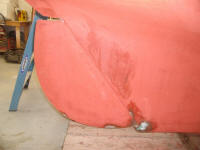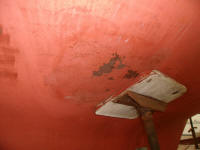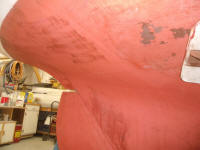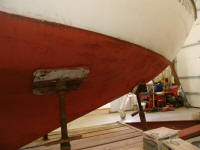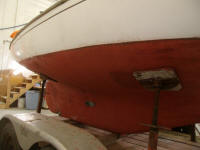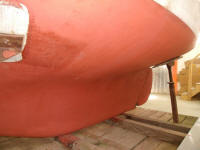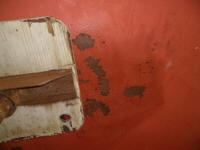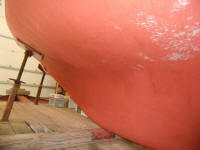
110 Cookson Lane | Whitefield, ME 04353 | 207-232-7600 | tim@lackeysailing.com
Tytanic | Tuesday, March 18, 2014
The final work list was pending my inspection and impressions, so to get started I inspected the boat in her as-arrived condition, starting with the bottom. The owner reported that he'd applied an epoxy barrier coat over a decade ago, which thickness was evident, and since then a number of coats of antifouling paint had been applied over the years.
There were several areas where the bottom paint was flaking away, all located at the basic jackstand locations. The way the stands were positioned on the trailer, they were well underneath the boat, in flatter, unsupported areas rather than nearer the stronger curved areas at the turn of the bilge, and the flaking paint was symptomatic of the flexing of the fiberglass hull when too much pressure was placed on the jackstands in these areas: the hull flexed, and cracked the paint, causing it to flake away. The underlying layers of paint were still well-adhered, and I could see no immediate evidence of barrier coat failure, though this was just an initial inspection.
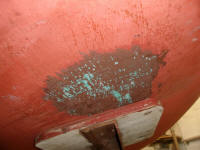
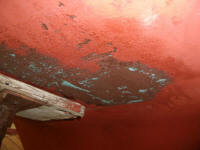
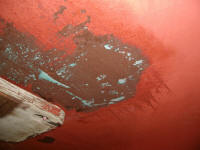
The topsides were original gelcoat in good, though dirty, condition. The original finish just needed a good cleaning and some polish: the boat had been in storage and not used for several years.
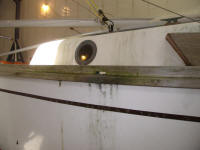
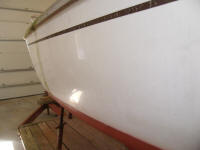
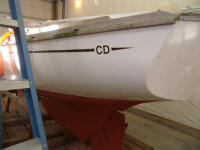
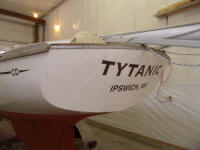
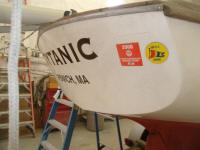
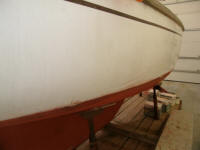

Similarly, the deck areas, still in their original finishes, showed dirt and staining from storage, and the usual and expected collection of normal stress cracks and other minor flaws, but were otherwise in good condition and would clean up without major effort.

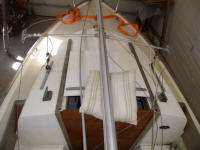


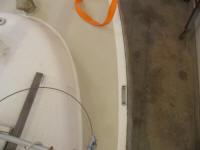

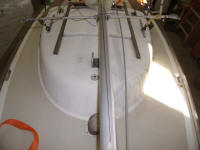
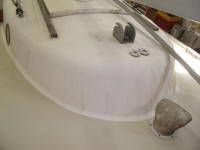

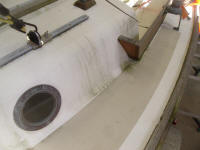
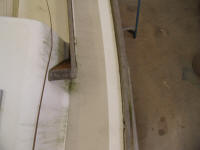
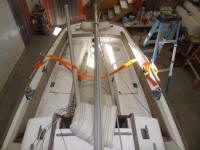
I removed the mast from its storage place on the boat, and cleaned up and resecured the rigging before hanging the mast out of the way on the wall for the moment. The spar was in good shape, with a few potential maintenance items noted. The standing rigging was showing its age, with several partially kinked areas from storage, and an overall collection of dirt and surface corrosion visible on the wires, but probably still had usable life in the boat's intended application.
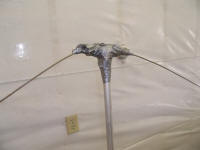
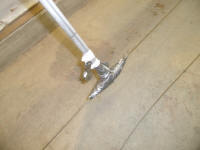
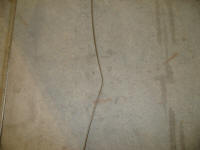
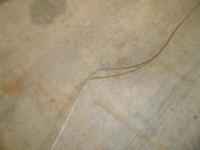

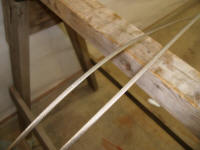
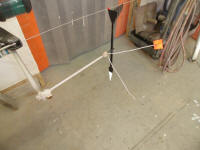
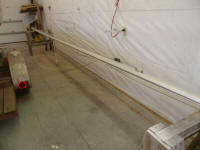
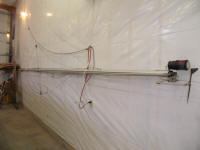
The exterior woodwork was mostly stripped of previous finishes, and had become well-weathered and dirty, but was in good condition.
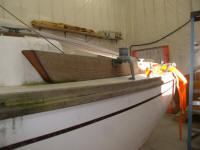



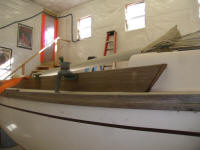
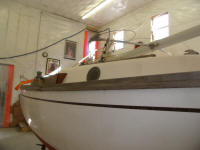
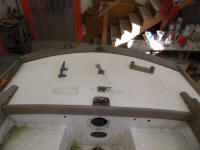
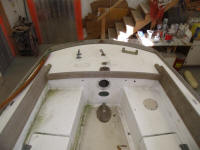

Inside, the basic cabin showed signs of long-term storage and some water collection, but was otherwise in good condition.
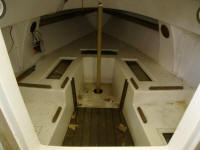
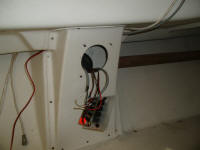
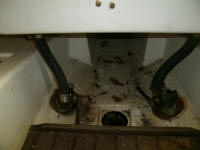
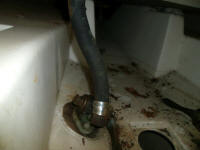
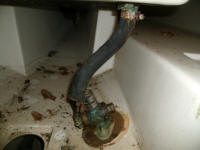
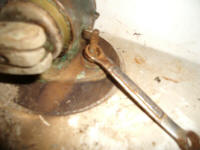
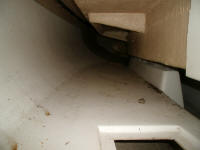
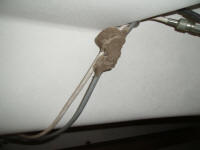

After my initial inspection, I removed major debris--leaves and acorns--and then vacuumed the whole boat to remove the first layer of dirt, dust, and debris before proceeding further. I spent the balance of the day's time working on a suggested work list for the project which, when complete, I'd discuss with the owner before starting work in earnest.
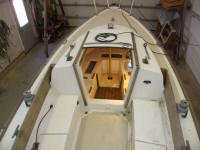
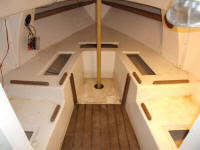
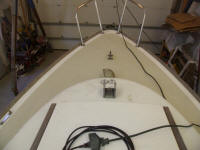
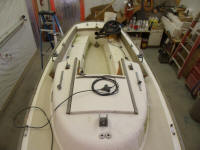
Total Time Billed on This Job Today: 4.75
Hours
